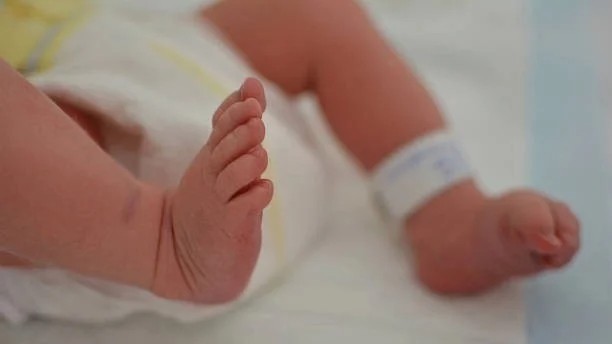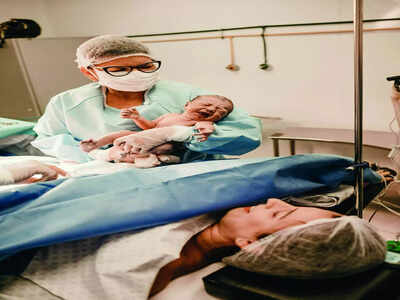A disturbing trend has emerged in Karnataka, where five districts have reported a sharp rise in stillbirths over the past year. Health officials confirmed that the increase has triggered concern within the medical community and state administration. The districts—yet to be officially named in a consolidated report—have shown higher-than-average numbers, drawing attention to gaps in maternal healthcare services. Public health experts attribute the phenomenon to multiple factors, including malnutrition, lack of prenatal care, and untreated infections. The troubling development has sparked calls for urgent intervention to prevent further maternal and infant losses in the region.
Background
Stillbirths, defined as the death of a baby after 28 weeks of pregnancy but before delivery, remain a serious but underreported public health issue in India. Karnataka, despite having better healthcare indicators than many states, has struggled to reduce its stillbirth rates in recent years. National health surveys indicate that maternal anemia, poor nutrition, and lack of institutional deliveries contribute heavily to these tragedies. The latest findings from five districts show that existing interventions may be insufficient. Health activists argue that socio-economic inequalities, limited awareness, and inadequate healthcare facilities have worsened the crisis in vulnerable communities.
Preliminary health data indicates that the rise in stillbirths is not evenly distributed but concentrated in five districts, which include parts of northern and coastal Karnataka. These districts have historically faced challenges with healthcare accessibility, especially in rural and tribal belts. Reports suggest that district hospitals are often under-equipped, with shortages of gynecologists and neonatal care units. In some areas, women have to travel over 30 kilometers to access delivery services, a delay that can prove fatal in critical cases. Officials are now prioritizing the establishment of better-equipped maternal health centers in these affected regions.
Government Schemes in Focus
The government has highlighted ongoing schemes like Janani Suraksha Yojana and Pradhan Mantri Matru Vandana Yojana, which provide financial assistance to encourage institutional deliveries and maternal care. However, ground-level reports show that many women are unaware of these benefits or face bureaucratic hurdles in availing them. In certain districts, payments have been delayed, discouraging beneficiaries. The Karnataka government is also promoting the Ksheera Bhagya program for nutrition, but coverage remains inconsistent. Health activists argue that without better monitoring and awareness campaigns, the effectiveness of these programs will remain limited, and preventable maternal tragedies will continue.

Infrastructure Gaps
Despite increased funding for healthcare, infrastructural shortcomings remain glaring. Many government hospitals in rural districts lack fully functional neonatal intensive care units (NICUs). Pregnant women often face referral delays, as smaller centers do not have adequate facilities for emergency cesarean sections. Ambulance services are also unreliable, with long wait times in remote villages. Power outages and inadequate sanitation at hospitals further compromise care. Experts stress that infrastructural gaps, combined with overburdened medical staff, create a dangerous environment where complications are poorly managed, contributing directly to the surge in stillbirths across Karnataka’s vulnerable regions.
Training and Staffing Shortfalls
Another significant challenge lies in the shortage of trained healthcare workers. Several districts have reported vacant positions for gynecologists, pediatricians, and nurses. Auxiliary Nurse Midwives (ANMs) and Accredited Social Health Activists (ASHAs) are often the only point of contact for rural women, but they lack advanced training to handle complex pregnancy complications. Many health workers also report being overworked, handling large populations with minimal resources. This shortage has resulted in delayed diagnosis of high-risk pregnancies and insufficient monitoring. Without adequate staffing, even the best policies and schemes cannot be implemented effectively at the ground level.
Stakeholder Views
Mothers and families affected by stillbirths have spoken out about their experiences, describing the immense emotional trauma of losing a child during delivery. Many complained about insufficient medical attention, delayed treatment, and lack of proper monitoring during pregnancy. Doctors acknowledged that while they attempt to provide consistent care, resource constraints and overburdened hospitals reduce efficiency. Nurses highlighted the shortage of trained staff, particularly in rural health centers. Meanwhile, local NGOs stressed that pregnant women often hesitate to seek hospital care due to cultural stigmas, financial difficulties, and fear of mistreatment, worsening maternal and child health outcomes.
Legal and Political Context
The rise in stillbirth cases has prompted questions in Karnataka’s legislative and administrative circles. Opposition leaders have criticized the government, accusing it of failing to strengthen maternal healthcare programs despite increased budget allocations. They argue that poor monitoring, corruption in medical supply chains, and uneven healthcare distribution are behind the crisis. In response, health officials claim they are reviewing district-level data and planning targeted interventions. They insist that new measures, such as expanding maternal nutrition programs and increasing rural healthcare staffing, will be prioritized. The issue is likely to become a political flashpoint in upcoming policy debates.
Environmental and Social Impact
Beyond medical issues, environmental and social factors are also contributing to rising stillbirth cases. Polluted drinking water, inadequate sanitation, and poor housing conditions increase risks of maternal infections that can harm pregnancies. Social determinants like poverty, early marriages, and gender inequality further weaken women’s ability to access quality healthcare. Many rural women continue to work strenuous hours during pregnancy, increasing complications. Health experts argue that stillbirth prevention requires more than hospital interventions—it demands improvements in nutrition, sanitation, education, and women’s empowerment. Without addressing these root causes, medical solutions alone will not bring lasting reductions.
Current Status
According to preliminary reports, the five affected districts are now under close scrutiny by Karnataka’s health department. District health officers have been directed to submit detailed records of maternal deaths, stillbirths, and neonatal care facilities. Special medical teams are being deployed to identify high-risk pregnancies and provide immediate assistance. Nutrition supplements and anemia treatment programs are being scaled up. Authorities are also planning awareness campaigns to encourage regular antenatal checkups and institutional deliveries. However, public health workers caution that short-term measures may only provide temporary relief unless sustained reforms and systemic improvements are implemented across districts.
Expert Opinions
Medical experts warn that stillbirths reflect deeper weaknesses in the healthcare system and require multi-sectoral solutions. Gynecologists emphasize the importance of regular ultrasound scans, timely treatment of infections, and proper monitoring of high-risk pregnancies. Public health specialists call for increased investment in community-level health workers, who often serve as the first line of support for rural women. Nutritionists underline the urgent need to combat maternal anemia, which remains widespread in Karnataka. Mental health experts also remind policymakers that families who experience stillbirths suffer long-term trauma, and psychosocial support must be integrated into maternal health programs.
Timeline of Events
The rise in stillbirth cases was first observed in district hospital records during routine health audits earlier this year. Local officials initially attributed the numbers to reporting errors but were forced to acknowledge the trend as data from multiple hospitals confirmed the increase. Over the past few months, concerns escalated as maternal deaths and stillbirths were simultaneously flagged in health department reviews. Following these revelations, the Karnataka government initiated investigations and ordered district-level inspections. NGOs and medical associations soon joined the discussion, urging stronger preventive programs and immediate government response to tackle the worrying development.
Broader Context
The tragedy unfolding in Karnataka mirrors broader national challenges in reducing maternal and child mortality. India has pledged to meet global health targets under the Sustainable Development Goals, but progress on stillbirth reduction remains slow. States like Kerala and Tamil Nadu have made significant strides through robust healthcare systems, while others lag due to weak infrastructure and socio-economic barriers. Karnataka’s situation, experts argue, shows the importance of equitable healthcare delivery across districts. If left unchecked, rising stillbirths could undermine India’s international commitments and reflect poorly on its maternal health initiatives at both national and global levels.
Conclusion
The rise in stillbirths across five Karnataka districts is both a public health crisis and a humanitarian tragedy. Each case represents not only a lost life but also immense trauma for families and communities. The situation exposes systemic gaps in healthcare, nutrition, and social support that cannot be ignored. While government interventions are underway, the challenge demands sustained reforms, stronger monitoring, and inclusive policies that address medical, social, and environmental determinants. Ultimately, Karnataka’s response will serve as a test of its commitment to protecting maternal and child health, ensuring that future pregnancies end in life—not loss.
The news of rising stillbirth cases has sparked widespread concern and debate among citizens. Families who have lost babies have expressed anger and disappointment with the healthcare system, sharing heart-wrenching accounts of medical negligence and lack of timely intervention. Community groups and women’s associations have begun organizing awareness drives, demanding stronger maternal healthcare facilities. Social media platforms are filled with messages of solidarity as well as criticism of government inaction. Many citizens argue that maternal health should be treated as a priority, equal to infrastructure development, as it directly reflects the welfare of society’s most vulnerable sections.
Role of NGOs
Non-governmental organizations have stepped in to bridge gaps where the state’s healthcare system falls short. NGOs like Population Foundation of India and local women’s groups have initiated programs to educate women about antenatal care and nutrition. They also provide counseling and support for grieving families who experience stillbirths. However, these organizations face funding challenges and cannot replace government responsibility. Experts argue that stronger collaboration between government bodies and NGOs could create more comprehensive maternal health programs. Such partnerships could ensure wider outreach, especially in underserved rural districts where health infrastructure is severely lacking.
Political Ramifications
The opposition has seized upon the rise in stillbirth cases as a political weapon against the Karnataka government. Leaders have accused the ruling party of neglecting healthcare priorities while focusing on large-scale infrastructure and industrial projects. They allege that maternal healthcare budgets are being underutilized or mismanaged, leading to preventable tragedies. In turn, government representatives insist that the issue is being addressed and accuse the opposition of politicizing a sensitive humanitarian crisis. With elections on the horizon, maternal and child health may become a central talking point, influencing public opinion and electoral outcomes in affected regions.
Follow: Karnataka Government
Also read: Home | Channel 6 Network – Latest News, Breaking Updates: Politics, Business, Tech & More


